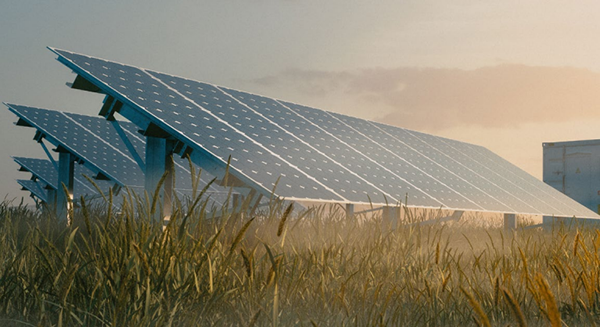The energy storage industry has grown considerably over the past few years, driven by both renewable energy and lower costs of energy storage technology, especially thanks to the burgeoning electric vehicle battery technology. Energy storage is an important driver of the climate-neutral transition of the energy system, and it can be combined with other technologies that can increase the flexibility of power systems with high proportions of renewable energy, such as grid expansion, demand response and energy efficiency technologies. Pumped hydro and thermal energy storage systems combined with centralized solar power plants have shown the ability to provide flexibility through large-capacity storage. By providing network services and optimizing transmission and distribution grids, battery energy storage systems, as well as energy storage technologies that have not yet been widely deployed, such as compressed air energy storage, are increasingly evident. This report explores three business cases in detail: The contribution of grid frequency adjustment, the use of energy storage systems to optimize photovoltaic power generation and self-consumption, and the participation of energy storage in the electricity spot market. Energy storage plays an important role in the transformation of the energy system. However, large scale shows a contribution in increasing flexibility. Battery energy storage is not only of great significance in large-scale applications, but also plays a role in the small-scale application field of the back-end demand side of electric meters, and its market is also expanding. Energy storage systems are becoming more and more popular in Germany, on the one hand, due to the high electricity price in Germany; electricity costs, so independent users are interested in energy storage-related solutions. However, this development trend must be conducive to grid optimization, otherwise it will inevitably require large-scale expansion of the grid.
This is especially the case in regions where grid expansion faces public acceptance issues. The value of energy storage is further highlighted in countries smaller than Germany and with less-than-ideal interconnections with neighbouring countries, such as island countries or in peripheral countries such as Portugal. The same is true for countries with large territories. In these countries, the cost of the transmission network is higher because renewable electricity must be transported over long distances. The current regulatory framework for the use of flexibility is complex and diverse. The relevant provisions are not always consistent and are scattered among various laws and regulations. Improvements in regulatory frameworks and grid usage fee mechanisms are therefore essential to encourage flexible utilization for the benefit of the grid. But the price of energy storage systems is still higher than other flexibility options. Therefore, reducing costs is the most important prerequisite for improving the economic benefits of energy storage systems. In addition to research and development, standardization is also very important to improve the economics of energy storage systems. Standardization is a prerequisite for mass production and helps to speed up the dissemination of technical knowledge and innovation. In addition to economic benefits, safety also plays an important role in energy storage systems such as batteries. Standardization can make an important contribution to improving product safety. Standardization also involves other aspects (eg installation, acceptance, grid connection, disposal) that are also relevant to the development of energy storage technology. Internationally, standardization can avoid technical barriers in trade, thereby lowering market entry barriers.

In China, the rapid development of renewable energy sources has increased the need for flexibility in conventional power plants and the entire power system. Curtailment of wind and solar has always been a challenge for China, and although the issue of curtailment of wind and solar has improved in recent years, China’s power sector still needs more flexibility. In 2016, the annual wind curtailment rate in China was as high as 17%, and the annual curtailment rate in Gansu and other provinces was even as high as 40%. After taking a series of measures, by 2019, the annual wind curtailment rate and light curtailment rate dropped to 4% and 2%, respectively. Currently, measures to increase power flexibility are mainly aimed at thermal power plants. But on the consumption and transmission sides, flexibility potential is also becoming increasingly important in terms of the introduction of balanced electricity market pilots and the planned introduction of economic incentives for demand response measures. It is especially important to design economic incentives for flexibility, i.e., through electricity markets and exchanges, balancing electricity markets, or through intervention by network operators (e.g., rescheduling, network congestion/connection management) to improve flexibility. corresponding mechanism. Energy storage systems also play an important role in China. By the end of 2018, China had about 30 GW of pumped-storage power plants and 1 GW of electrochemical energy storage (battery energy storage). The Chinese government plans to promote the expansion of battery energy storage facilities to further promote the integration of renewable energy into the grid. However, in addition to high initial investment or capital costs and technical difficulties (life cycle, safety requirements), future development challenges remain in terms of price, market and support mechanisms for energy storage utilization.

The increased share of renewables in the energy system changes hourly power generation patterns. Relying on wind and solar radiation for power generation results in increased volatility in the power generation process, which must be balanced. Flexibility is defined as follows: “A power system is designed to ensure that generation and consumption are balanced at all times in time and space. Flexibility of a power system represents the extent to which the power system can adjust generation and consumption according to demand in order to have A cost-effective way to keep the system stable. Flexibility refers to the ability of the power system to maintain continuous supply in the face of sharp fluctuations in supply and demand.” Typically, the proportion of renewable energy is increasing, and hourly power generation changes will increase. However, the magnitude of volatility and the need for flexibility depend on the type of renewable energy and the combination of different renewable energy technologies. Photovoltaic power plants are very suitable for areas with sufficient solar radiation, and photovoltaic grid connection has the characteristics of diurnal and seasonal fluctuations. The amount of wind power connected to the grid is highly correlated with wind speed. Among various types of renewable energy, the hourly grid connection curve of wind power is the most irregular. Therefore, it is difficult to predict the grid-connected volume of wind farms and photovoltaic power plants, so the power generation plan in the power system depends to a large extent on the grid-connected volume forecast, which should be as accurate as possible. However, even with improved forecast levels, flexibility technologies are still needed to rapidly increase or decrease generation or demand. However, there are also some non-volatile renewable energy sources. Worldwide, hydropower is a very common renewable energy source with an almost constant output. However, in some countries with dry summers, hydropower is more seasonally volatile than wind power (wind power is fairly constant in Portugal, but hydropower fluctuates greatly in summer). Biomass is very controllable and is now widely used in Europe and North America. Geothermal and solar thermal power plants combined with energy storage can also ensure a constant power supply. The combination of different technologies will determine the final power generation pattern and determine the balance What technique or concept to use during volatility.

Due to the different geological and atmospheric conditions in large market areas, renewable energy integration fluctuations can be better balanced within large market areas, and close cooperation of neighboring countries (or neighboring provinces) plays a role in providing flexibility important role. Harmonization of energy policies between neighbouring countries can be beneficial to both parties, as it ensures that the flexibility offered by each other is mutually supportive, thereby improving supply security and system stability. However, cooperation at the policy level must be accompanied by ensuring that actual grid capacity and interconnection are aligned. However, preliminary experience shows that extending grid lines, developing power plants and renewable energy sources has little or no acceptance by the local public, as is the case in some parts of Germany. Businesses and politicians are therefore obliged to engage citizens in discussions about the energy transition at an early stage. This process should not only provide information to residents and the general public, but also involve citizens in the implementation process and their input should be carefully considered.

Therefore, it is necessary to further improve the grid charging system to encourage the flexible use of electricity to serve the grid. The main task of grid charging is to share network costs among grid users, which is fair and takes into account the contribution of each user. Currently, the rigid price component of the grid cost does not take into account the current state of the grid (the problem of congestion during the day) and the use of grid-related flexibility. Adjusting grid tariffs and introducing dynamic elements into the grid tariff system (charges over time/loads) can help to increase flexibility to optimize the current state of the grid. A market for flexible products should be established. The flexibility products provided by grid operators and the resulting economic returns can encourage power plant operators to use their flexibility to optimize grid operations. As a result, power plant operators can increase grid purchases and/or feed into the grid, as opposed to decisions they might make based solely on market conditions. Further development of the grid charging system could eliminate unnecessary control effects, thereby encouraging flexible use of electricity. Taxes, cost-sharing and levies inhibit the use of flexibility and hinder the commercialization of technologies such as power-to-heat. The so-called government-guided price (SIP) is usually charged per kWh and is not dynamic, i.e. it does not include any price element that changes over time or load. Therefore, adapting the tax allocation system to make it usable provides a further starting point for incentivizing multiple grid-related uses. In general, it is desirable to reduce the complexity of taxes and fees by, for example, incorporating government-guided prices. This will help improve the complex issue of the cumulative effect of various government-guided prices, and at the same time, it will also help policymakers measure whether the effects of energy policy regulation are in line with expectations.






